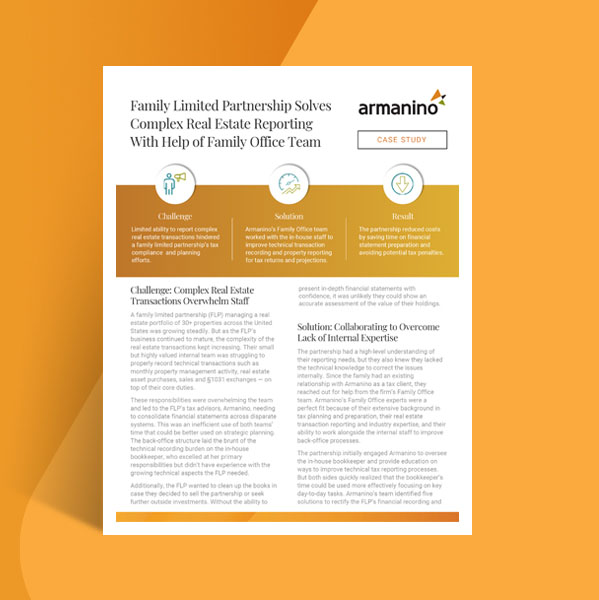
After years of speculation and laws passing in several states, the National Collegiate Athletic Association (NCAA) recently announced that its participating athletes can monetize their name, image and likeness (NIL). Combined with the power of social media and influencer status, the door has swung wide open for athletes to profit from sponsorships and endorsements. They also can be compensated for camps and the direct sale of products (such as the manufacturing or design of apparel) and receive equity positions in companies for ambassador relationships.
Ostensibly, the possibilities are limitless. But without a federal mandate, the NCAA has announced that athletes must adhere to their state’s NIL laws and has deferred to the institutions to determine student athletes’ compliance with the relevant jurisdiction’s tax rules. At the same time, these athletes now find themselves with financial responsibility most people their age don’t experience.
If you’re an amateur athlete who could benefit from the new NCAA ruling, there are several aspects you (or someone advising you) should consider to make the most of this policy change.
You may already be aware that you’ll have to file a tax return. But did you know you’ll have to file tax returns in each jurisdiction where you’re paid?
For instance, if you’re playing basketball at a university in California, you may charge people in your dorm for an autograph — that income is taxable in California. Then, if you’re paid for a public appearance in New Mexico, you may need to file a state income tax return there as well. What’s more, both of these activities are taxed differently from promoting a product on social media in exchange for equity in a company.
These state and local taxes and the relevant filing requirements are all things you should consider when deciding whether to accept certain opportunities. It’s important to understand what states, cities or other local jurisdictions you’ll need to file a tax return in, what the rules require and when you need to file to meet deadlines.
Your tax liability from multiple types of income and in numerous states can quickly add up. By establishing a “loan-out” company, such as an S corporation, you can help minimize your tax exposure, shield assets from frivolous lawsuits and maximize your net worth.
When you form a loan-out company, you loan your services out through that entity. You’re paid as an employee of the loan-out instead of providing your services as an individual or being an employee of another company (such as the one paying you for the use of your NIL).
Establishing a loan-out company provides much more flexibility when it comes to minimizing your tax exposure, as the company provides for all your bona fide business expenses. Moreover, loan-out corporations are separate legal entities from you as an individual and provide a layer of liability protection to your personal net worth.
If you create an S corporation to receive payments for your NIL, your income won’t be subject to self-employment taxes. Taking this path presents financial advantages, but it doesn’t necessarily make the process simpler. An S corporation will be more complex because you’ll have to pay yourself a “reasonable salary.” The definition of what’s reasonable isn’t black and white, so you may need assistance from a professional who can help you determine what your salary should be.
Another tax optimization approach with significant long-term benefits is funding a retirement plan. One method is a 401(k), which allows you to deduct the amount you deposit into the account from your taxable income. Other types of plans, such as a qualified defined benefit plan, also may allow for significant tax deductions.
For high school and college-age athletes, funding a retirement account also serves as an investment opportunity. If you put away $100,000 when you’re 18 — even if you don’t add anything later — it will be significantly more by the time you’re 60, and you’ll likely be in a stronger position to retire comfortably.
Creating a money management strategy with short-, medium- and long-term goals is a critical consideration that many young people don’t think about. But if you can make significant earnings at such a young age, developing strong financial habits can greatly improve your quality of life now and in the future.
The first planning consideration is to pay yourself first. Just like many college students get a part-time job, once you have an idea of how much you can earn from your NIL, you should set a savings goal that helps determine how much money you can spend to supplement your lifestyle.
If you’re earning in the six figures, you want to ensure you’re not wasting your money on leasing a car, buying watches or clothes, or picking up bar tabs for all your friends. An after-tax savings percentage as high as 50-60% should leave enough for you to live comfortably. And if you invest the rest of your money, you can still have security for your later years.
Saving your money intelligently is what gives you the ability to pay yourself first and with greater peace of mind. A smart investment strategy created by you or a trusted, certified professional can enable you to realize significant gains. Compound growth is key to this, as contributing to low-risk vehicles can yield large returns by the time your career is long over in another 30 years or so.
Financial planning is rooted in proper budgeting and forecasting. You should learn how to save, how to invest and how much you can spend. The most common approach is called “dollar-cost averaging.” This is the process of deciding how much from every paycheck you’ll deposit to your retirement account and your investments and what you’ll spend. It’s the cornerstone of building good financial habits and making your money last. You should set spending priorities and understand how those cash outflows will affect your long-term plan.
Protecting yourself can be accomplished through other means than saving money and using a loan-out. Various insurance policies may come in handy for an array of risks that could cause you significant financial hardship. For example, if you’re walking around campus flaunting expensive cars or jewelry, you may be a more likely target for criminals. Personal article insurance can protect you in case of theft.
Personal liability and commercial liability (if you form a loan-out company) insurance act as potential safeguards for you and your business. For example, perhaps you’re contracted to appear at an event at a party. Afterward, an attendee accuses you of assault or other unwanted behavior and files a lawsuit. Your policy could shield your assets during the ensuing legal battle.
Another form of coverage that’s particularly advantageous for athletes is disability insurance. Your physical well-being enables your career. But if you suffer a career-ending injury before you sign a professional contract, your dream can disappear in an instant. Enrolling in a disability policy gives you flexibility in this unfortunate scenario.
As a teenager or young adult looking at a bank account with one or more commas for the first time, you may want to purchase something like a car. Then, it may be shocking when you find out that you don’t qualify for financing because you have no credit history.
You can avoid this disappointment by taking steps to establish strong credit. Open a credit card account and use it responsibly — pay the balance in full and on time!
Many young people are unaware that there is such a thing as “good debt.” When you’re approved to buy or lease that car you want, make the down payment and pay the subsequent installments on schedule. This is an example of how you can build a credit history and raise your credit score. As your net worth increases, and you build a good credit score, you’ll be better positioned to leverage good debt in future opportunities.
Recent legislation and the NCAA’s new policy offer amateur athletes NIL opportunities that were impossible before. With those new avenues come concerns that the new rules will create a Wild West type scenario.
Athletes should look to capitalize on what’s available and be cognizant of the risks and hurdles involved. The best way to prepare is to become financially literate by learning effective money management habits and educating yourself on how to secure your earnings now and safeguard funds for your future.
For more information on navigating these new opportunities and responsibilities, contact Armanino’s Business Management team.


